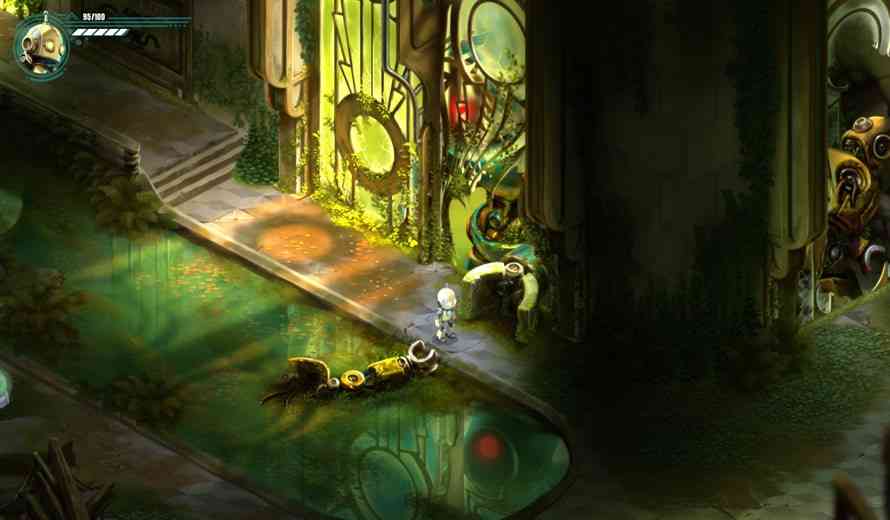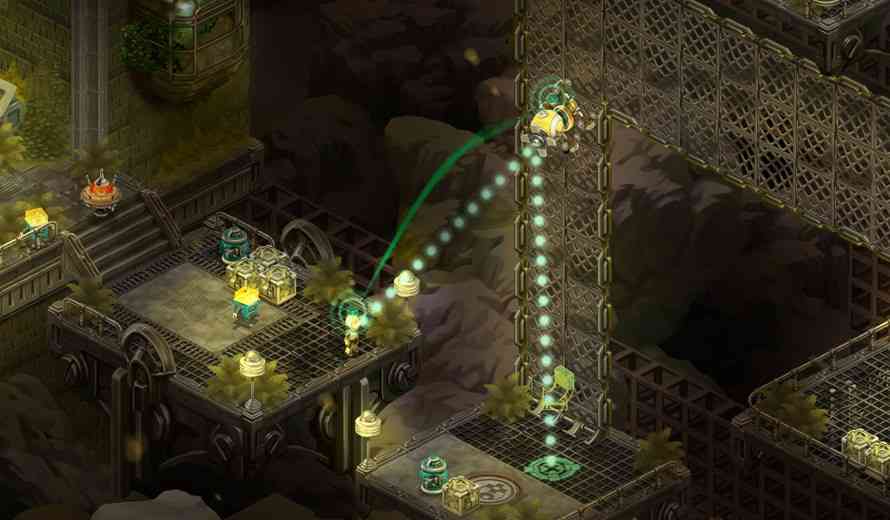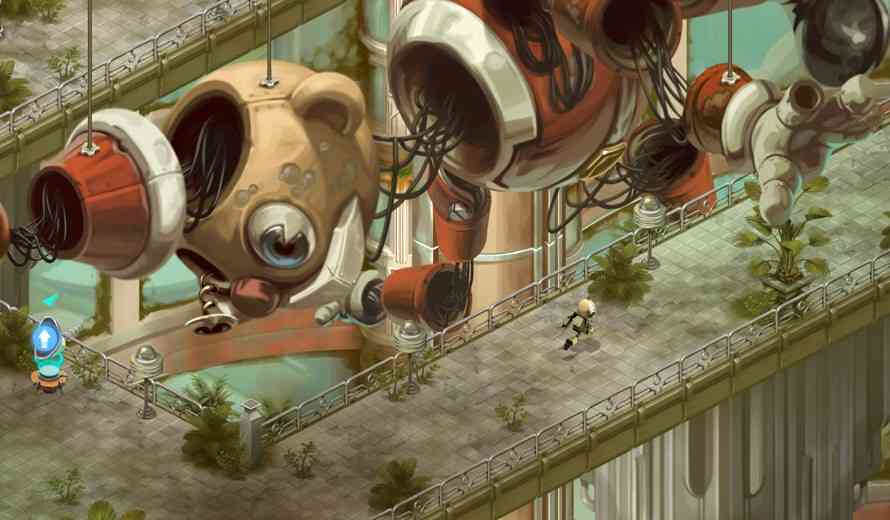Retro Machina Review
If you’re like me, you’ve played a lot of games in which nothing stands out as remarkable, or different, or even vaguely creative. You wonder why they bothered, why the developers and their team poured hundreds of hours into what was clearly an uninspired product. Retro Machina is an action-puzzle sort-of platformer game that has one standout quality, a few other things that work well enough, and a couple of annoying and less successful aspects that discolor what is generally a pretty positive experience. But nailing that one cool thing pulls Retro Machina ahead of some of its indie action game peers.
We’ll get to that one cool thing in a moment. Retro Machina is an isometric action puzzle game, weaved together with some generally simple combat and exploration. You play an anonymous robot (think Clank with less personality), who is exiled from his factory home and spends the game trying to return, while avoiding the machines that are bent on his destruction. There’s a bit more story to uncover along the way, but it’s clear that Retro Machina fits somewhere in the rich sci-fi tradition of “humans allowing sentient machines to rule/destroy/save the world” fiction. The main character doesn’t have much in the way of personality and while we can empathize with the plight of the plucky rebel in an unfair system, even in a world of machines I wanted to care a little more about the hero and the implied plight of the disappearing humans.

Although the robot eventually has a varied move set and can even fly, thanks to a jet pack, a great deal of the game consists of moving through a fairly linear set of environments and solving puzzles, disarming traps and other obstacles, and eventually fighting a series of bosses using many of those same puzzle-solving mechanics. This isn’t an actual open world, and although secret areas away from the main path to discover and unlock give the character a little breathing room, there is still a great deal of backtracking over familiar ground. The game’s map is sometimes less than helpful.
It Takes Two
The puzzles are generally well thought out and not too frustrating and almost always solved through the main character temporarily taking control of other machines to flip switches or stand on pressure plates, or to access areas the player can’t. As the game progresses, the player learns to control a wider and more powerful selection of robots and machines and the puzzles become more complex. When it works, this mechanic gives Retro Machina an engaging co-op vibe, but there is a frustrating problem with the way the player assumes control of other robots. Since control of other machines is based on facing and proximity, it is all too easy to misdirect the control beam, wasting several seconds and, in the heat of combat, invariably resulting in taking some significant hits. The issue is especially irksome in the often challenging boss battles. Since combat and action are nearly as important as puzzle solving in Retro Machina, it’s unfortunate that the control issues and the player’s general lack of effective weapons and poor defense are so frustrating.

On a more positive note, I started by suggesting the Retro Machina has one singular, standout feature and it absolutely does. Based on futurist illustrations from the 1940s and 50s, the game’s hand-painted environments are unique, beautiful and completely capture the feeling of the dark visions some mid-twentieth century thinkers had about our growing reliance on technology. At once colorful, promising and sinister, this is a world of robots, power grids, primitive computers and all of it is going to seed, with nature reclaiming the margins of derelict buildings and a dome-encased sky city beckoning in the distance. Likewise, the synth-heavy score does an excellent job of complementing the action and visuals, somehow suggesting a bit of emotion under all the gears, cogs and circuits. The overall sound design is good, varied and helps to sell the game’s vision of a future ruled by machines.

With its unique, effective art design and plethora of satisfying puzzles, Retro Machina has many of the ingredients of a memorable and rewarding game. It’s unfortunate that combat and some key control mechanics discolor what could be a vibrant experience. Thematically, Retro Machina doesn’t cover new ground but the way it approaches puzzles and story makes sense and feels consistent with the world it has created. As an early game from a new studio, Retro Machina is an auspicious, if flawed, debut.
**Xbox Series X code supplied by the publisher**
The Good
- Exceptional, hand painted art style
- Nice variety of environments
- Effective sound and music
- Well designed puzzles
The Bad
- Imprecise control mechanics
- Combat can be frustrating
- Too much backtracking through areas
